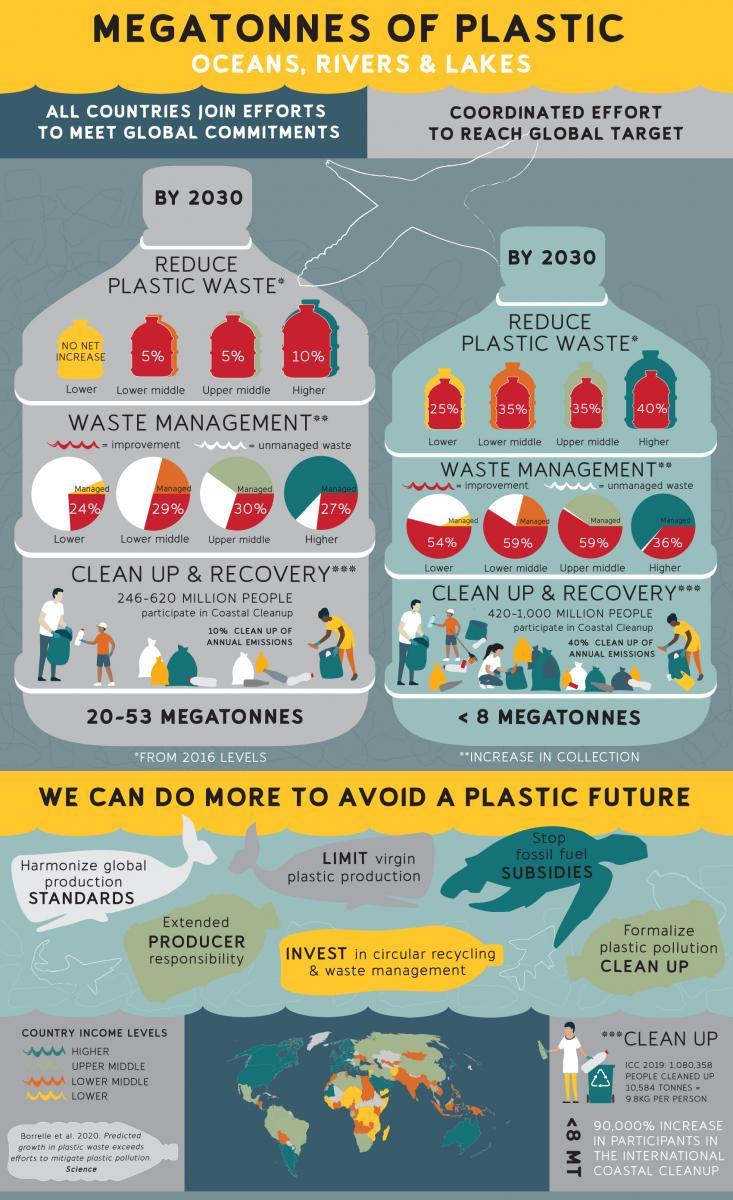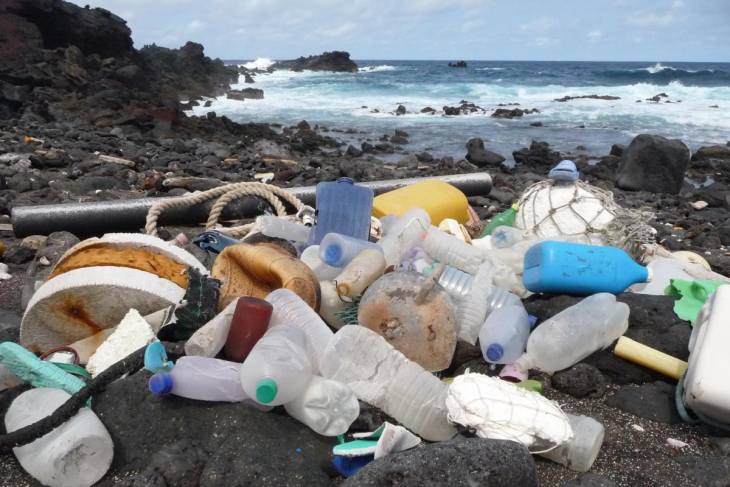Global Group of Scientists Sound the Alarm on Plastic Pollution
New study estimates that even if governments around the world adhere to their ambitious global commitments, and others join in efforts to curb plastic pollution, annual plastic emissions may increase to 53 MT of plastic waste to oceans, lakes, and rivers by 2030.
For release: September 18, 2020
Contact: communications@sesync.org
Scientists studying the prevalence of plastic pollution in aquatic ecosystems around the world are concerned after measuring the scale of human response needed to reduce future emissions.
“Unless growth in plastic production and use is halted, a fundamental transformation of the plastic economy is urgently needed, where end-of-life plastic products are valued rather than becoming waste,” says Stephanie Borrelle, Smith Postdoctoral Fellow at University of Toronto (U of T) and lead author on the study published in Science outlining the accelerating pace with which plastic emissions enter Earth’s waterways annually.
The research is led by an international group of experts funded by the National Science Foundation through the Unviersity of Maryland's National Socio-Environmental Synthesis Center (SESYNC). The objective of this work was to evaluate the level of effort needed to achieve a global reduction target for plastic pollution.
The expert working group modelled future scenarios to achieve a global reduction target of less than 8 metric tonnes by 2030 using existing mitigation strategies: reducing plastic waste (which includes bans), improving waste management, and recovery (i.e., clean-up) from the environment. Even with parallel efforts in all three solutions, the level of effort is enormous: 25%- 40% reduction in plastic waste across all economies, increasing the level of waste management from 6% to 60% in low-income economies and cleanup of 40% of annual plastic emissions. To put this final number into people-power, the clean-up effort alone would require the efforts of at least 1 billion people participating in Ocean Conservancy’s International Coastal Cleanup—a Herculean task given this is a 90,000% increase in effort from the 2019 clean-up.
“Even if governments around the world meet their ambitious global commitments, and other countries join those efforts to curb plastic pollution, worldwide annual emissions to rivers, lakes and oceans could be as much as 53 million metric tonnes by the year 2030,” says Chelsea Rochman, assistant professor in the Department of Ecology & Evolutionary Biology at U of T, and senior author of a study. “That’s far beyond the 8 million metric tonnes amount that was declared unacceptable in 2015.”
These findings emphasize that significant reductions in plastic waste production and where end-of-life plastic products are valued rather than becoming waste are critical to avoiding a plastic future.
The SESYNC working group is led by Drs. Stephanie Borrelle (steph.borrelle@utoronto.ca), Megan Barnes (mdbarnes@hawaii.edu), and Chelsea Rochman (chelsea.rochman@utoronto.ca).
Read the article in Science.
Summary Results Infographic:

